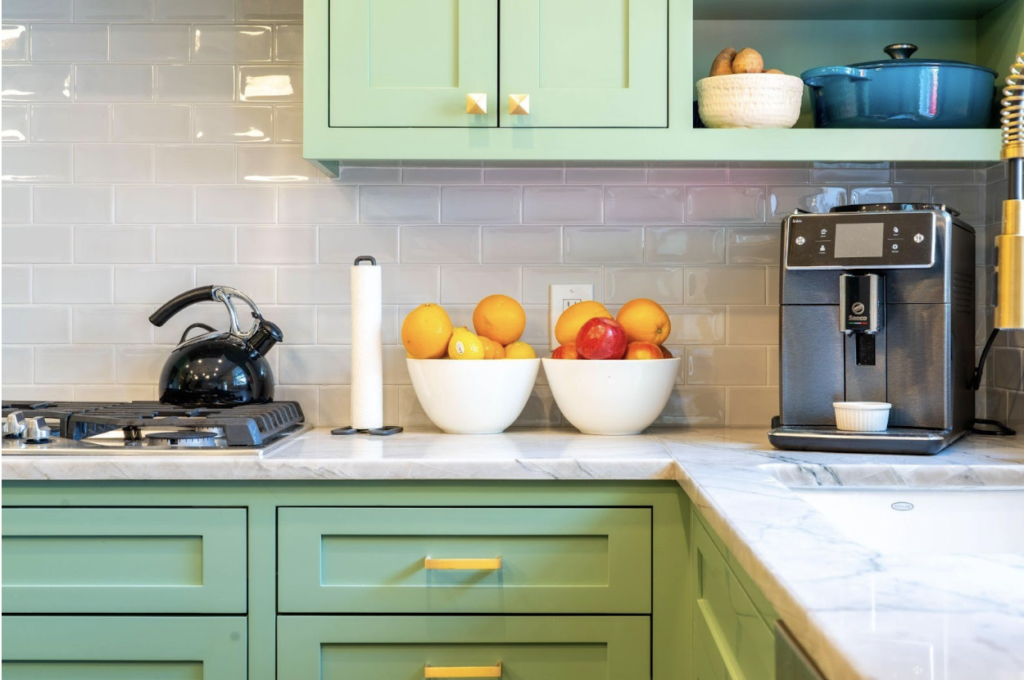
When choosing a countertop material, quartz and quartzite are often mentioned in the same breath. While they sound similar and can even look alike at first glance, these two surfaces are quite different in composition, performance, and care.
That’s why it’s important for you to know how each of these materials behaves and what the strengths and disadvantages are before you choose! Stone countertops are a long-term investment, so you need to make the right choice.
Natural vs. Engineered Composition
Quartzite is a natural stone formed from sandstone and compressed by intense heat and pressure within the earth’s crust. Over time, this process transforms the stone into a dense, hard surface that resembles marble in appearance but performs more like granite. Its veining, color variation, and natural sparkle make it a favorite among homeowners who want an organic, luxurious look.
Quartz is an engineered stone. It’s composed of ground natural quartz minerals blended with resins and pigments to form a durable slab. Because it’s manufactured, quartz offers more predictability in color and pattern. That consistency is especially appealing to homeowners who want a specific design aesthetic without the variation that comes with natural stone.
Durability and Maintenance Needs
Both quartz and quartzite are highly durable, but they excel in different areas. Quartzite is extremely hard, making it highly resistant to scratching and chipping. However, it remains porous and needs to be sealed periodically to prevent staining and water damage. It can withstand heat fairly well, though prolonged exposure to very hot cookware may still cause damage if proper protection isn’t used. (Just make sure to use trivets and you’ll be fine!)
Quartz is slightly softer but nonporous, which makes it easier to maintain on a daily basis. It resists stains from coffee, wine, and oils without requiring a sealant. However, because it contains resins, it is more sensitive to heat than quartzite. Placing a hot pan directly on a quartz surface may lead to discoloration or damage. In busy kitchens where heat exposure is common, this difference becomes important.
Visual Appeal
Quartzite has natural veining and depth that vary from slab to slab, which gives each installation a one-of-a-kind appearance. Its organic patterns and earthy tones can create a statement piece that blends easily with other natural elements in the home. For those who prefer a high-end, luxurious look with authentic stone character, quartzite is often the preferred choice.
Quartz shines in any interior, thanks to the sheer volume of colors, patterns, and finishes available. It offers an impressive range of colors, including solid hues, speckled patterns, and marble-inspired designs. You can find quartz that looks very similar to any type of natural stone, but because it’s engineered, it’s also possible to find colors that don’t occur in stone or anywhere in nature. That flexibility makes quartz ideal for homeowners who want to match other finishes or fixtures with precision.
Installing Quartz or Quartzite Countertops
Installation requirements are similar for both surfaces. Because they are heavy and require professional tools and expertise, fabrication and installation should always be handled by trained professionals. Working with a knowledgeable supplier ensures the material is properly prepared, transported, and installed, which helps protect your investment and prolong the life of the surface.
Here at WallStone, we guide customers through the differences between quartz and quartzite to help them find the material that fits their space and lifestyle. Whether you’re looking for a bold natural statement or a sleek, polished finish, we offer high-quality options and expert support every step of the way. If you’re ready to renovate, or you’re building a new home and want the perfect countertops, let us help you. Reach out today for a free quote!
